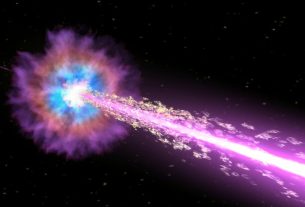“If you’re in hi-tech – you’re in trouble!”
That is what former Intel CEO Andy Grove once observed. He was referring to the hyper competitive environment, high-risk innovations, and the roller-coaster ups and downs that technology firms encounter – summed up in his best-selling 1996 book Only the Paranoid Survive.
Grove, a Hungarian Jew, survived the Holocaust as a child, and when he was 20 made his way to the US in 1956. But I doubt that even he imagined the pickle in which Israeli hi-tech would firms find themselves after the October 7 massacre, when for some, half or more of their employees were called up to IDF reserve duty, funding dried up, antisemitism became rampant globally, and the immediate goal shifted from “thrive” to “survive.”
Yet despite it all, Israel’s hi-tech industry, the engine of economic growth and prosperity, is bouncing back, showing notable resilience.
In materials science, resilience is the ability of a material to experience stress and pressure, become deformed as a result, and then release the stress and bounce back to what it was. Similarly, hi-tech resilience is the ability to absorb massive blows, plan, respond – and find ways to endure and prevail.
Here are several case studies of how Israeli hi-tech has proven its resilience.
Super-resilience = Supercomputer
On November 20, trillion-dollar global company Nvidia announced “completion of the first phase of the Israel-1 artificial intelligence supercomputer.” It is now available for use “by the company’s R&D teams, as well as select partners.”
Israel-1 is one of the world’s fastest, most powerful AI supercomputers. It was completed in under 20 weeks, nearly two months earlier than expected, announced as Israel fights a major war.
Here is the back story.
Jensen Huang, Taiwanese American genius, founded Nvidia on April 5, 1993. His team invented the GPU (graphics processing unit) in 1999 that fueled the explosive growth of the video gaming industry.
Early on, Huang perceived the need for super-powerful processors to support artificial intelligence and led Nvidia to begin designing and producing them. Fast forward: Nvidia today sells the lion’s share of the micro-processors used for generative AI.
And Israel is “inside” those chips.
Israeli entrepreneur Eyal Waldman – like Jensen Huang, a genius – left Intel in May 1999 to launch a start-up with some Intel colleagues to make software and hardware that enabled high-performance computing by speeding data transfer. Waldman perceived the pressing need for this as data transfer to and from servers boomed.
On March 11, 2019, Nvidia announced it would acquire Mellanox for $6.9 billion. The deal closed on April 27.
On the face of it, it seemed like a very bad fit. Mellanox’s competitive advantage – high-speed networking for data centers – had seemingly no obvious overlap with Nvidia’s offerings. But Huang had a key insight.
Super-powerful AI chips needed fast, smooth communication among thousands of individual chips – and Mellanox knew precisely how to make that happen.
To obtain enormous computing power, those thousands of individual A100 chips have to be smoothly and rapidly connected, like neurons in our brains – like 10,000 teenagers in a football stadium, who each has to be able to hear and speak to every other person.
That is where Mellanox comes in. This was Mellanox’s innovative expertise from its inception. It is why Huang bought Mellanox.
As Sophie Shulman noted in the Israeli business daily Calcalist, at Nvidia the arithmetic is weird: 7 + 93 = 1,000. Meaning? A $7 billion acquisition of Mellanox, by a company worth at the time $93 billion, has generated a company worth $1.2 trillion in the current market value of its shares.
Today, for artificial intelligence able to generate text and images, we can rightly claim: Israel inside. Nvidia supplies an estimated 70% of the powerful microprocessors that power AI.
For instance, ChatGPT, a leading large-language-model AI program, runs on a staggering 10,000 Nvidia A100 GPU chips.
Waldman himself has left the merged company, but one of his co-founders, Michael Kagan, is today Nvidia’s chief technology officer. For AI chips, Nvidia has a large lead over competitors Intel and AMD.
Many acquisitions fail. Nvidia’s expensive purchase of Mellanox succeeded. Nvidia Israel today employs over 3,200 workers, up by half from 2020, and is hiring another 250. Worldwide, nearly one Nvidia employee in eight is Israeli.
Supercomputers can do many things – develop new, renewable sources of energy; mitigate climate change; predict natural disasters; develop response plans for these increasingly frequent events; and develop new drugs to treat debilitating diseases, to name a few.
Memo to the global legions of antisemites now rearing their ugly heads: You too will benefit from Israel-1. Eat your heart out.
Stuck in safe rooms?
A senior manager at an Israeli software company recounted to me: “My company has nine Israeli staff who do all the operations and financial work. If all of us became unavailable because of this war – perhaps stuck in safe rooms – the staff wouldn’t get paid, and our revenue stream would be impacted. It became immediately critical to implement a plan to train North American staff members for order processing and payroll, figuring out how to identify what other risks we needed to address.”
I am certain that the same emergency contingency planning is going on at all hi-tech firms – established ones and start-ups alike.
Acquisition? Now? Why not!
Two weeks into the war, The Jerusalem Post’s Zachy Hennessey reported that Innocom, an enterprise IT security solutions start-up, acquired Webiscope. Innocom is part of the Israeli Aman group, which has development centers in Poland, Hungary, and Portugal. The message: Business as usual.
Tomar Frey, CEO of Innocom, stressed “the vital need to sustain employment continuity as much as possible to safeguard the economy…Our acquisition will enable us to continue developing the Israeli hi-tech market and maintain the resilience of Israeli society.”
Nor is this deal unique. US-based Shift4, a global integrated payments firm, acquired the Israeli start-up Finaro, helping drive Shift4’s move into Europe. Shift4 CEO Jared Isaacman said, “We realize this comes during an extremely difficult time….The ability to work together…is a testament to the talent and character of everyone on the Finaro team.”
Jewish DNA
Dov Moran’s M-Systems start-up innovated the memory stick (called “disk on key” by Israelis). Now the managing partner of venture capital firm Grove Ventures, Moran ascribes Israel’s hi-tech resilience to its Jewish DNA.
“We are a tiny nation persecuted generation after generation,” he told Calcalist. “Those who survived are those who have the ability to overcome crises, the ability to be strong, especially in tough times.
“It takes time, but we are going through the recovery process. Think about it like getting into an accident. First, you have to learn how to walk, then run, then drive again. We are beginning this process of recovery.”
What about Israel’s failed political leadership? “This painful period will bring a change of leadership,” he believes, “and will attract better people …people who think about their people.”
Huge wave of innovation
“Out of all this mess and bad times that we are going through, we will probably see the biggest tailwind that we have ever seen for the new wave of innovation in Israel,” noted Ronen Nir, managing director of PSG Equity at a post-Oct. 7 hi-tech seminar.
History is on Nir’s side. World War II saw six massive life-changing innovations: flu vaccines, driven by the US Army; penicillin, discovered in 1928 but mass produced by the US War Department during WWII to prevent fatal infections from wounds; jet engines; blood plasma (freeze-dried plasma, combined with water); computers; and radar.
The October 7 disaster and ensuing war will, as Nir says, also generate a tidal wave of creative ideas. When the need is great, so are the creative brains that rise to the challenge.
Rebuilding Israel’s industry and agrotech in the Western Negev will be a massive undertaking. Look for hi-tech to respond with enormous creativity.
Quietly, without fanfare, a reconstruction administration (minhelet tekuma) has been set up to plan how to build back Israel’s agriculture and industry. A high-level team is hard at work. The goal? Build back better.
The result will be a worthy new chapter in the long history of Jewish, Israeli, and hi-tech resilience. ■
The writer heads the Zvi Griliches Research Data Center at S. Neaman Institute, Technion; he blogs at www.timnovate.wordpress.com.


